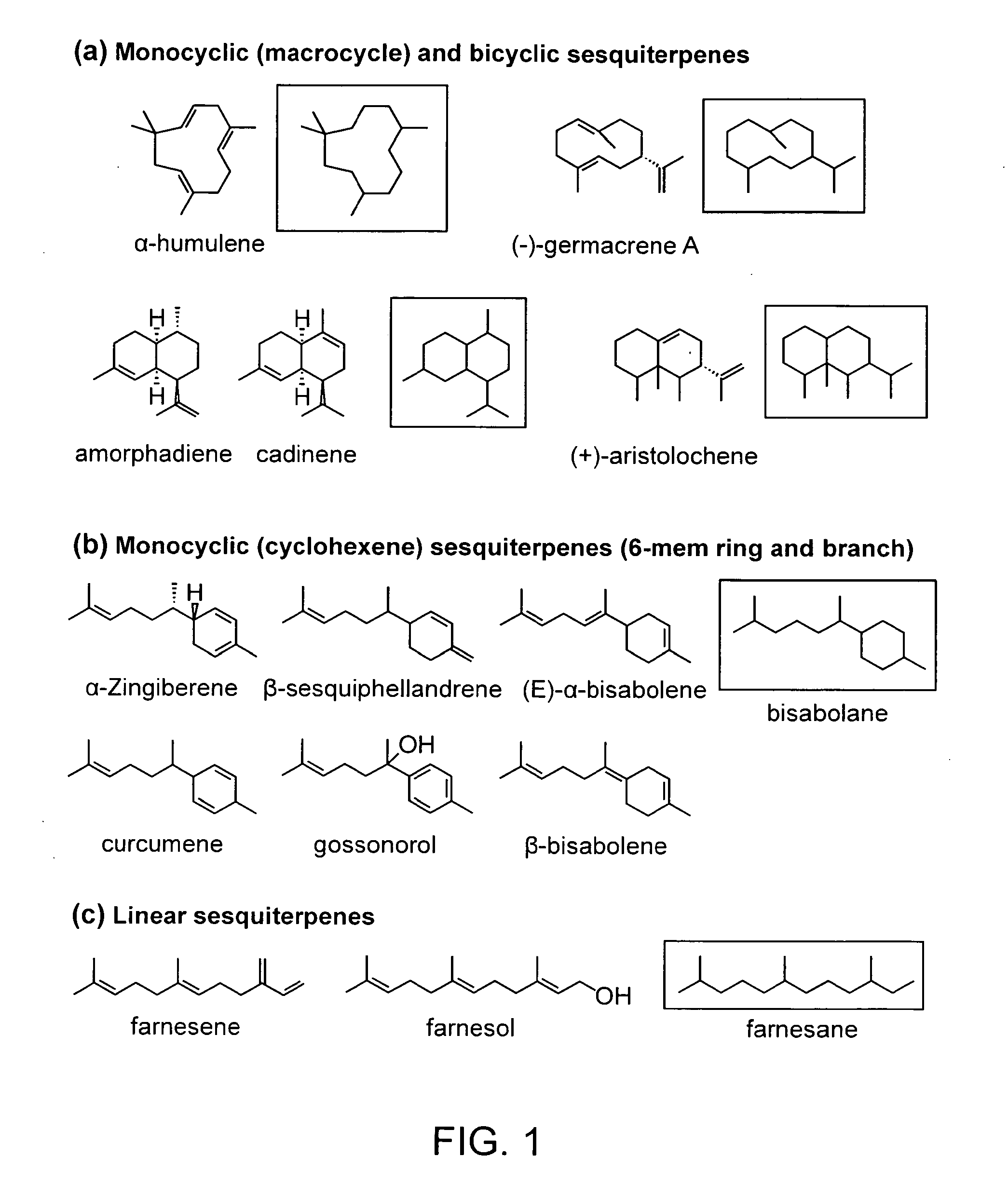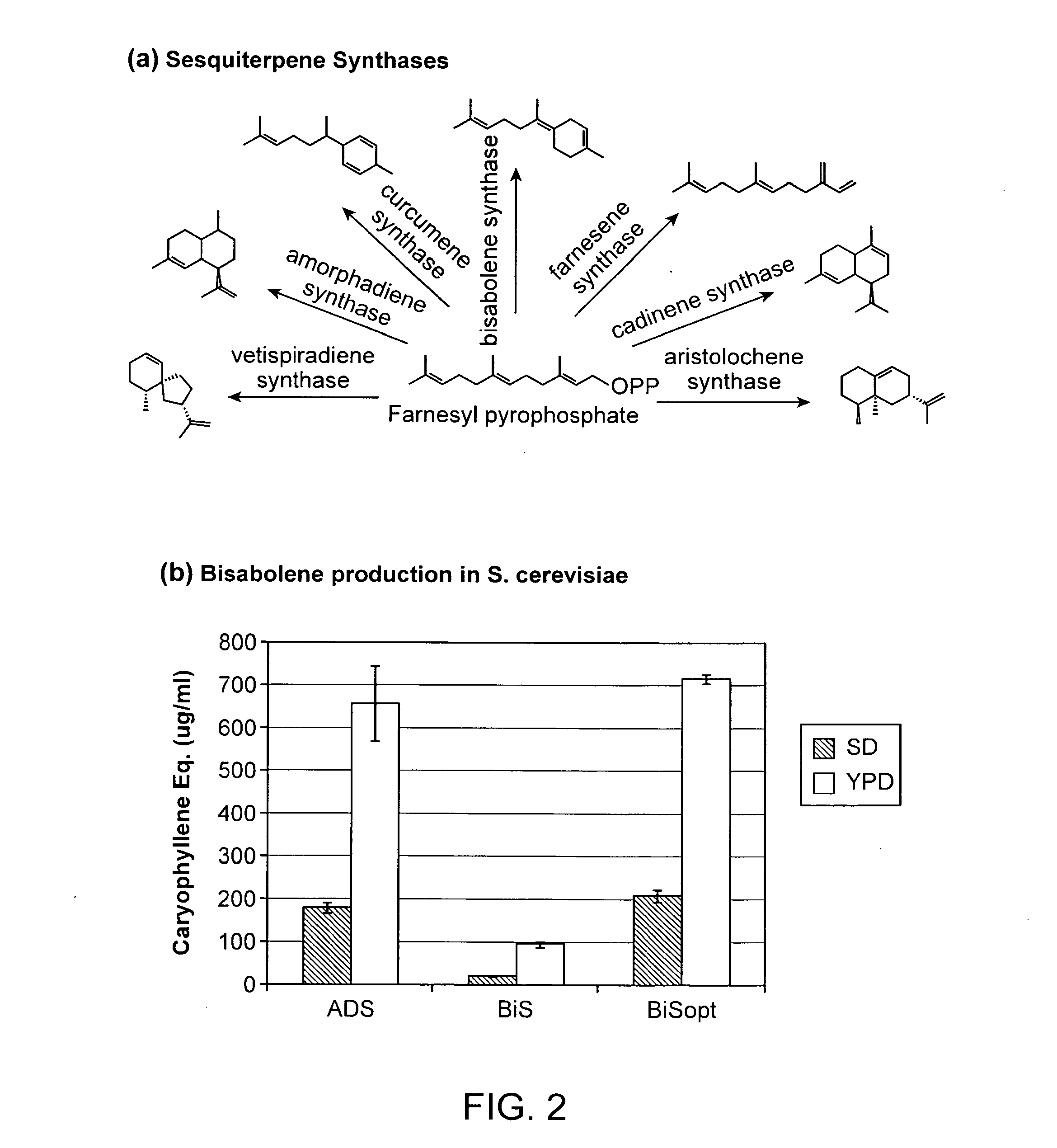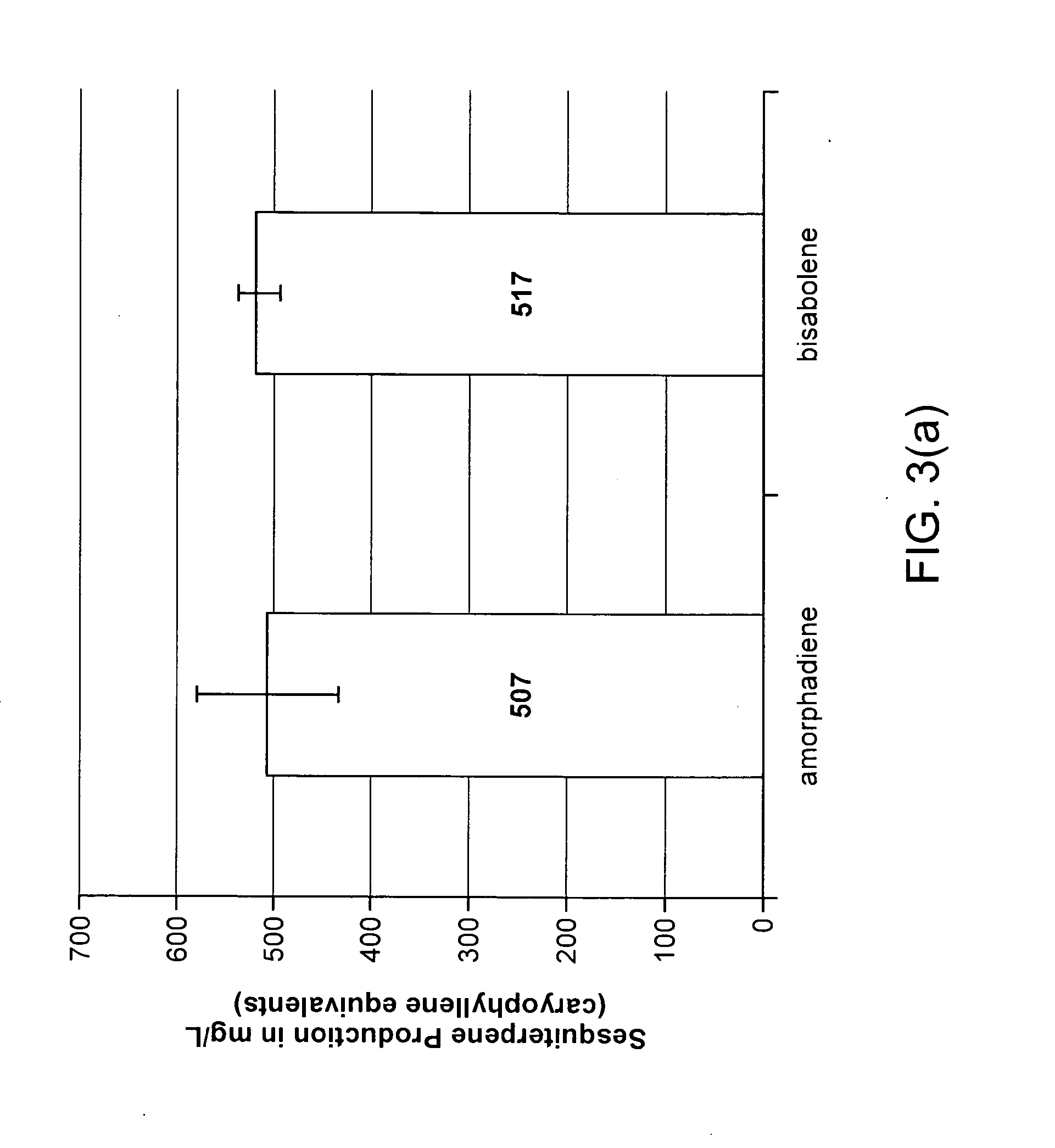Isoprenoid based alternative diesel fuel
a technology of isoprenoid and diesel fuel, which is applied in the direction of fuels, machines/engines, mechanical equipment, etc., can solve the problem of not being a renewable source of energy, and achieve the effect of improving cold weather properties and high titer
- Summary
- Abstract
- Description
- Claims
- Application Information
AI Technical Summary
Benefits of technology
Problems solved by technology
Method used
Image
Examples
example 1
Biosynthesis of Bisabolene and Zingiberene
[0145]The host cells harboring mevalonate pathway genes and terpene synthase genes (such as bisabolene synthase and / or zingiberene synthase) were prepared and grown in production media with optimal temperature and shaking condition. The mevalonate pathway genes are derived from several different species including bacteria and yeast. Terpene synthase genes were synthesized from commercial gene synthesis companies based on the known protein sequence of corresponding terpene synthases. In this example, bisabolene synthase from Abies grandis, and zingiberene synthase from lemon basil were used, but those of skill in the art will appreciate that the origin of these proteins is not limited to these species.
[0146]For the test of the sesquiterpene production, culture medium was overlaid with immiscible organic solvent, and the sesquiterpenes products were accumulated in the organic layer for the product analysis. GC / MS analysis has been performed to...
example 2
Production of Hydrogenated Bisabolene
[0153]A palladium on carbon catalyst was used to chemically reduce biosynthetic bisabolene into fully hydrogenated bisabolanes. Biosynthetic bisabolene isolated from E. coli cell cultures was fully reduced into to a 3:1 mixture of bisabolanes (data not shown). Bisabolene was fully hydrogenated to bisabolane as demonstrated by the lack of vinylic protons in the 1H NMR spectrum and the lack of alkenes and 13C NMR spectrum (FIGS. 4(b) and 4(c), respectively).
[0154]To a reaction vessel, biosynthesized bisabolene and 10% Pd / C catalyst [palladium, 10 wt. % on activated carbon] were added (see, FIG. 4). The vessel was sealed and purged with nitrogen gas, then evacuated under vacuum. To begin the reaction, the vessel was stirred while adding compressed hydrogen gas at 75 barr, recharged (×4). The mildly exothermic reaction was carried out at room temperature. Final conversion was about 100% marked by end of hydrogen consumption and verified by gas chroma...
example 3
Analysis of the Fuel Properties of Hydrogenated Bisabolene
[0155]Fuel property testing of hydrogenated bisabolene was carried out using standard ASTM methods known to and used by those of skill in the art. Table 1 sets forth the various fuel properties analyzed for each of Diesel Fuel Grade #2, bisabolene (mixture of isomers) and hydrogenated bisabolene as well as the ASTM test methods employed to analyze the particular fuel property. It can be seen from Table 1 that hydrogenated bisabolene has fuel properties comparable to commercial diesel fuel Grade #2 and, therefore, it is clear that hydrogenated bisabolene fuel compositions of the present invention can advantageously be used as an alternative to diesel fuel and jet fuel as well.
TABLE 1ASTMBisaboleneHydrogenatedHydrogenatedTestmin orDiesel(mixture ofcommercialbiosyntheticPropertyUnitsmethodmaxaGrade # 2isomers)bisabolenebisaboleneDensity (@ 15.56° C.)kg / m3D4052864.6859b 819.7n / aAPI Gravity (@D4052 32.2n / a 41n / a15.56° C.)Flash...
PUM
| Property | Measurement | Unit |
|---|---|---|
| Cetane Number | aaaaa | aaaaa |
| cloud point | aaaaa | aaaaa |
| thermal stability | aaaaa | aaaaa |
Abstract
Description
Claims
Application Information
 Login to view more
Login to view more - R&D Engineer
- R&D Manager
- IP Professional
- Industry Leading Data Capabilities
- Powerful AI technology
- Patent DNA Extraction
Browse by: Latest US Patents, China's latest patents, Technical Efficacy Thesaurus, Application Domain, Technology Topic.
© 2024 PatSnap. All rights reserved.Legal|Privacy policy|Modern Slavery Act Transparency Statement|Sitemap



